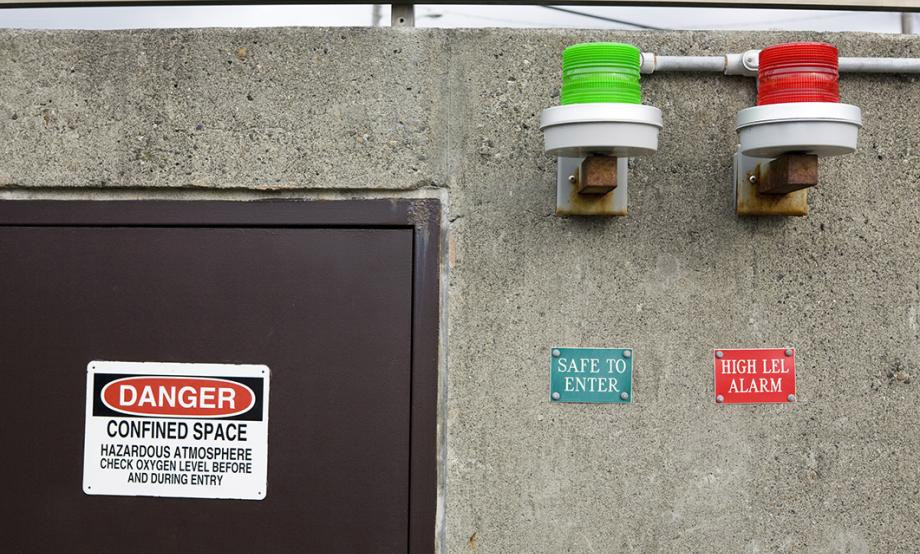Many workplace incidents and accidents happen each year due to the dangers involved in confined spaces. People are injured, or even die because they are not informed or not prepared for the risks involved in working in a confined space, so this month, we will dive into confined space entry safety.
Let's start with what a confined space is. A confined space is an area that wasn’t designed or intended for continuous human occupancy. This can include places such as elevator shafts, silos, tanks, sewers, pipelines, manure pits, airplane wings, boilers, manholes, manure pits and storage tanks. To learn the difference between a confined space and a restricted space, be sure to read this blog post.
A confined space often involves greater risks than any other workspace. First, these areas are usually difficult to get into and out of due to small or awkward entry and exit points. Not only does this add difficulty to workers getting into and out of the area, but it also makes first aid and rescue more difficult in the case of an emergency. On top of this, confined spaces have the additional potential risks of poor air quality, low oxygen levels, fumes, chemical exposure, fire hazards, low visibility, or physical hazards such as heat/cold, radiation or noise.
With all of these additional dangers, it is important that you and your coworkers are very aware of the specific risks involved with each confined entry job. Many factors need to be evaluated. Prior to entering a confined space with other workers, it is important that everyone involved knows the risks involved, have a plan for what to do in case of an emergency and that they have their mind on the task at hand.
It only takes a momentary lapse for someone’s mind to wander, or for a detail to be forgotten. When that happens during a confined space entry, the consequences can be dire. Workers need to remain aware of these potential hazards and how to avoid or control them in their day to day work activity.
You should know what the dangers are specific to the space that you will be working in and know the best way to keep yourself safe. If the work area has low oxygen levels, for example, you will need to wear a breathing apparatus and know how to properly work with that equipment. If the area has high or low-temperature risks, workers will be required to wear temperature appropriate personal protective equipment and perhaps add additional venting to the area. In the case of dangerous chemicals or fumes, you must be aware of the particular risks and have a plan in place as well. All of these risks need to be determined and planned for on a case by case basis, which means that each worker needs to be properly trained and educated on confined space.
To get a better idea of how to properly identify and handle the risks involved with working in a confined space, it’s important that you have been properly trained. During the confined entry course at AIP Safety, we define the difference between working in restricted and confined spaces and go over some of the most common hazards. You will also participate in realistic scenarios that will involve using a self-contained breathing apparatus. You will also learn how to complete a basic rescue in the confined space simulator.

